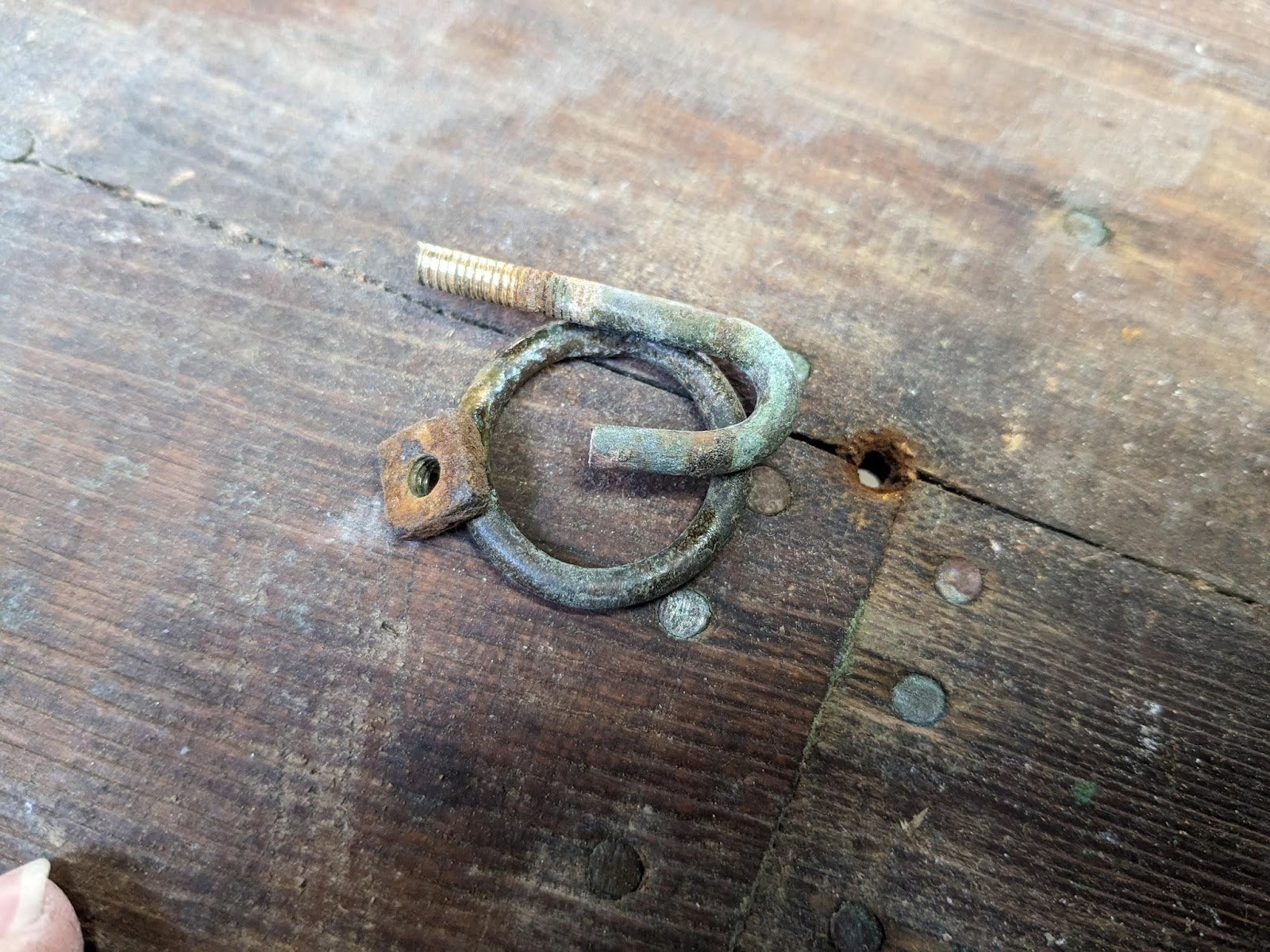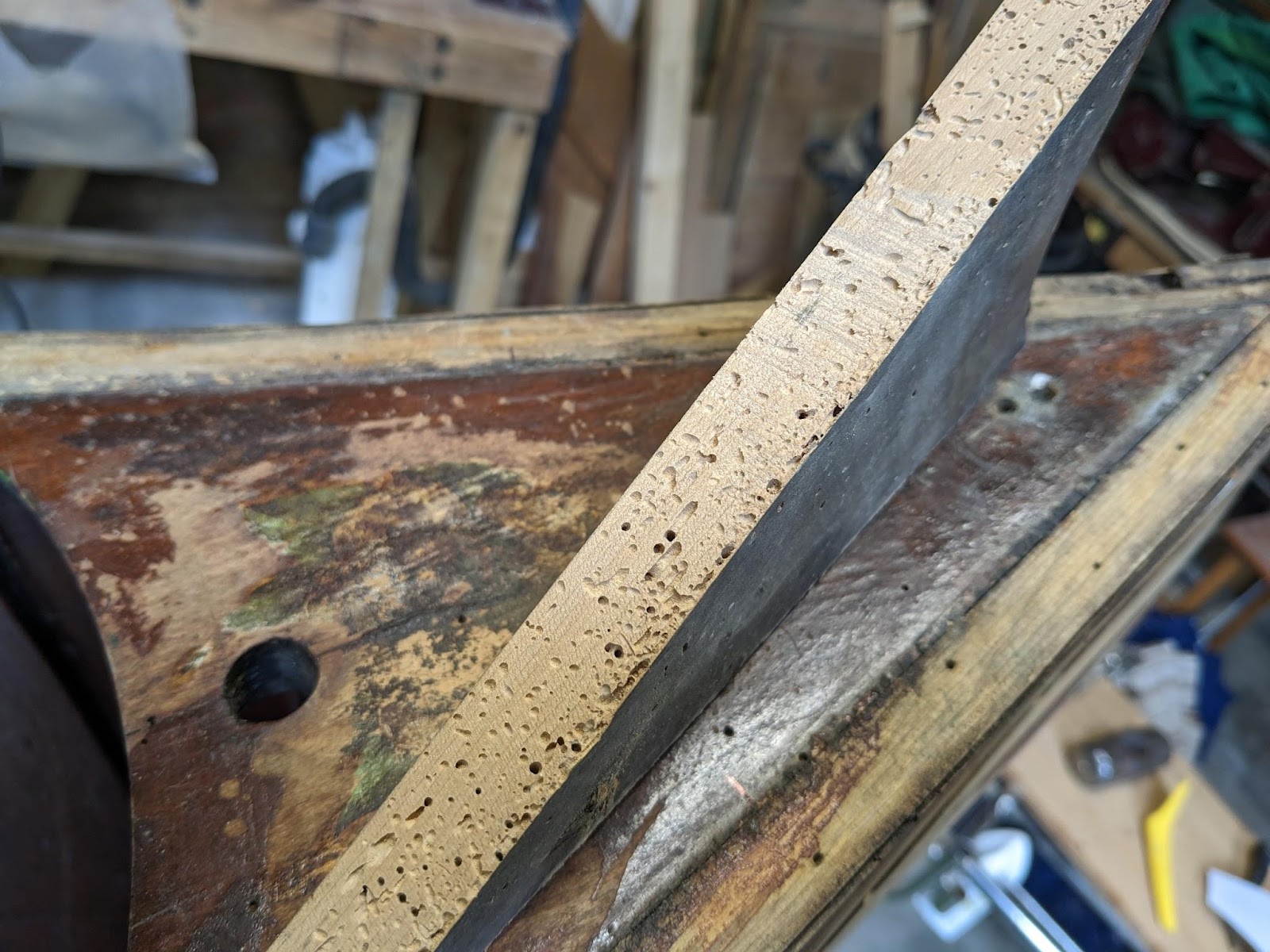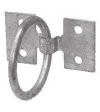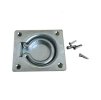samb
Wooden Canoe Maniac
I've started a new thread so I can try to keep everything in an easy to find place. The boat also features here and here if you want to see how it was when I bought it, and a bit of it's history.
The canvas is now off. Held on originally by one steel tack at every 4 inches with a few extras at the ends, for the last number of years / decades, held by the side caps and rust. The previous canvas repairs were made by plastering the gash with some mastic, working it under the canvas, plastering more ‘stuff’ over the top, slapping on a patch and tacking with steel tacks around the edge. Crude but seemingly effective.

The stems are the old type. No sign of rot, so must have been well looked after. The ribs are as Andre describes. Cant ribs on Chestnuts seem to cause dating problems. Despite its apparent age, my cant ribs are wider and thinner than the rest of the ribs at 2 ¾ x 5/16. They end below the gunnel; they are just fastened to the planks.

The Chestnut Painter ring is brass with a steel nut. It will have to stay that way because I won’t be able to find a brass one with the correct thread.

I've decided to replace the decks because they are a bit wormy and so removed and will replace the short end top planks so I can access the screws. The rest of the planking seems in great condition except for one small damaged bit, but I may well find more while stripping the insides.
It seems that all the fastenings to the gunnels are steel / rust, the decks included. There was no way they were coming out so I set to on the deck with a jigsaw with a metal cutting blade. It's a good job I decided on new decks judging by the state of the insides.

I will need to make seats. Research over the forum suggests that the seat frames of pre-fire boats are shaped differently in some way. They seem to be described as rounded or chamfered, or in one case, I think “more shapely” was the term used. Does anyone have any photos which show this difference? Should the seats have spacers or are they hung directly under the gunnel? I presume seat frames should be maple, the same timber as decks and thwart?
Sam
The canvas is now off. Held on originally by one steel tack at every 4 inches with a few extras at the ends, for the last number of years / decades, held by the side caps and rust. The previous canvas repairs were made by plastering the gash with some mastic, working it under the canvas, plastering more ‘stuff’ over the top, slapping on a patch and tacking with steel tacks around the edge. Crude but seemingly effective.
The stems are the old type. No sign of rot, so must have been well looked after. The ribs are as Andre describes. Cant ribs on Chestnuts seem to cause dating problems. Despite its apparent age, my cant ribs are wider and thinner than the rest of the ribs at 2 ¾ x 5/16. They end below the gunnel; they are just fastened to the planks.
The Chestnut Painter ring is brass with a steel nut. It will have to stay that way because I won’t be able to find a brass one with the correct thread.
I've decided to replace the decks because they are a bit wormy and so removed and will replace the short end top planks so I can access the screws. The rest of the planking seems in great condition except for one small damaged bit, but I may well find more while stripping the insides.
It seems that all the fastenings to the gunnels are steel / rust, the decks included. There was no way they were coming out so I set to on the deck with a jigsaw with a metal cutting blade. It's a good job I decided on new decks judging by the state of the insides.
I will need to make seats. Research over the forum suggests that the seat frames of pre-fire boats are shaped differently in some way. They seem to be described as rounded or chamfered, or in one case, I think “more shapely” was the term used. Does anyone have any photos which show this difference? Should the seats have spacers or are they hung directly under the gunnel? I presume seat frames should be maple, the same timber as decks and thwart?
Sam


